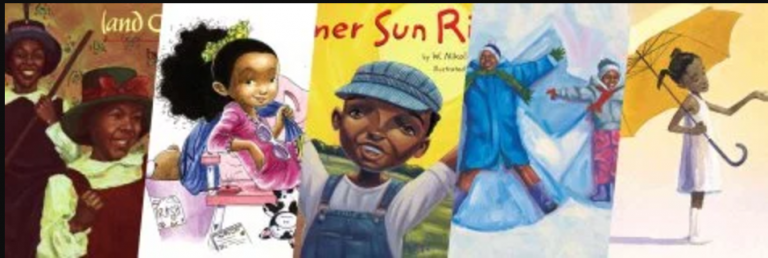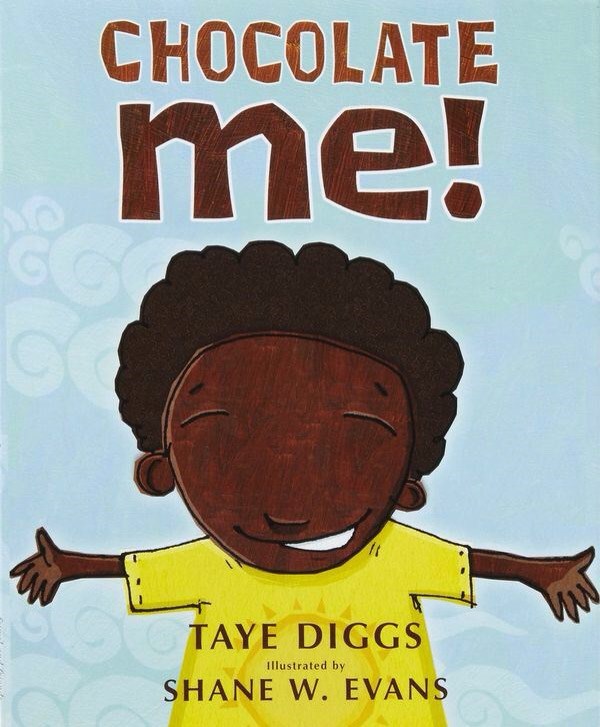By Vanessa Penberg
It is important that the voices of people of all backgrounds and ethnicities are amplified and that they see themselves represented equitably across all disciplines and media.
Representation can be incredibly inspirational, as the Obama family certainly is to millions of black children and families. It enables people to envision things possibilities for their own lives that previously seemed impossible. Representation helps marginalized people feel visible and illuminates cultures and ways of life that were previously unfamiliar.
One of the most powerful forms of representation comes in books, beginning with children's picture books, as images of all types of people and cultures activate the imagination and help foster respect for diversity and empathy for others. In this way, books and stories can make an enormous difference in dispelling stereotypes and prejudice and building community. Furthermore, as children get older, books become a way to teach history and supplement the often limited narratives provided in textbooks. They reveal unsung heroes and stories of those whose voices are typically not heard.

It is especially important for babies to see themselves portrayed through books and other media, as self-concept and self-esteem, which form the foundation for children's social-emotional development, begin developing in infancy. Babies' self-concept begins to develop as they learn about who they are by how they are treated and represented. One of the best ways for babies to see themselves represented is through picture books, as they are often the first form of media to which babies are exposed and are therefore the best way to show babies their reflections aside from looking in a mirror.
As they get older, children look to parents, teachers and media images for evidence that they are lovable, smart, capable, and worthy of being seen. If they do not get this proof or validation and a chance to see themselves positively depicted then low self-esteem may develop. This message can be communicated just as strongly when children do not see themselves and people who look like them equitably represented in stories and literature.
In her recent article in The New York Times entitled "Mirrors for My Daughter's Bookshelf," Sara Ackerman shares her experience of realizing that there are insufficient books where black little girls are the protagonist. She writes about her effort to find stories that she can use as inspiration for her daughter and in so doing she discusses why diversity and inclusiveness are so essential in literature. To illustrate this, Ms. Ackerman applies a metaphor of books as windows, sliding glass doors and mirrors as used by Rudine Sims Bishop, education professor at Ohio State University.
"Books can be windows into worlds previously unknown to the reader; they open like sliding glass doors to allow the reader inside. But books can also be mirrors. When books reflect back to us our own experiences, when scenes and sentences strike us as so true they are anchors mooring us to the text, it tells readers their lives and experiences are valued. When children do not see themselves in books, the message is just as clear."
This past summer, Bedford Stuyvesant Restoration Corporation hosted a children's author series, in conjunction with their green market at Marcy Plaza, which included local authors Javaka Steptoe, Zetta Elliot and Bryan Collier. They shared their incredibly beautiful and important stories with the children and families, along with their inspiration and motivation for telling the stories about which they choose to write. They spoke about how vital representation is to young people and how they seek to create characters that they knew, such as family members and neighbors, so that children would recognize them and know that they mattered.
Below is a list of book recommendations that highlight their incredible work as well as other authors of children and young adult literature to make it a bit easier for families to fill their bookshelves with diverse black narratives.
Board Books
Whose Knees are These? And Whose Toes are Those? by Jabari Asim
Ten, Nine, Eight by Molly Bang
Full, Full, Full of Love by Trish Cooke
Tickle, Tickle by Helen Oxenbury
Preschool
I'm Your Peanut Butter Big Brother by Selina Alko
Happy to be Nappy and Be Boy Buzz by bell hooks
Whistle for Willie by Ezra Jack Keats
Mufaro's Beautiful Daughters: An African Tale by John Steptoe
Elementary School
Ada Twist, Scientist by Andrea Beaty
Rosa by Nikki Giovanni with illustrations by Bryan Collier
Harvey Moon, Museum Boy by Pat Cummings
Radiant Child: The Story of Young Artist Jean-Michel Basquiat by Javaka Steptoe
Middle School
The Crossover by Kwame Alexander
Camo Girl by Kekla Magoon
Eighth-Grade Super Zero by Olugbemisola Rhuday-Perkovich
This Side of Home by Rene Watson
One Crazy Summer by Rita Williams —Garcia
High School
A Long Way Gone: Memoirs of a Boy Soldier by Ishmael Beah
Running the Rift by Naomi Benaron
Parable of the Sower by Octavia Butler
A Wish After Midnight by Zetta Elliott
The Color of Water by James McBride
Brown Girl Dreaming by Jaqueline Woodson
Additional resources for books written by black authors and featuring black protagonists can be found at the following websites:
Marley Dias and #1000 Black Girls:https://grassrootscommunityfoundation.org/1000-black-girl-books-resource-guide/#
The Brown Bookshelf: https://thebrownbookshelf.com/




